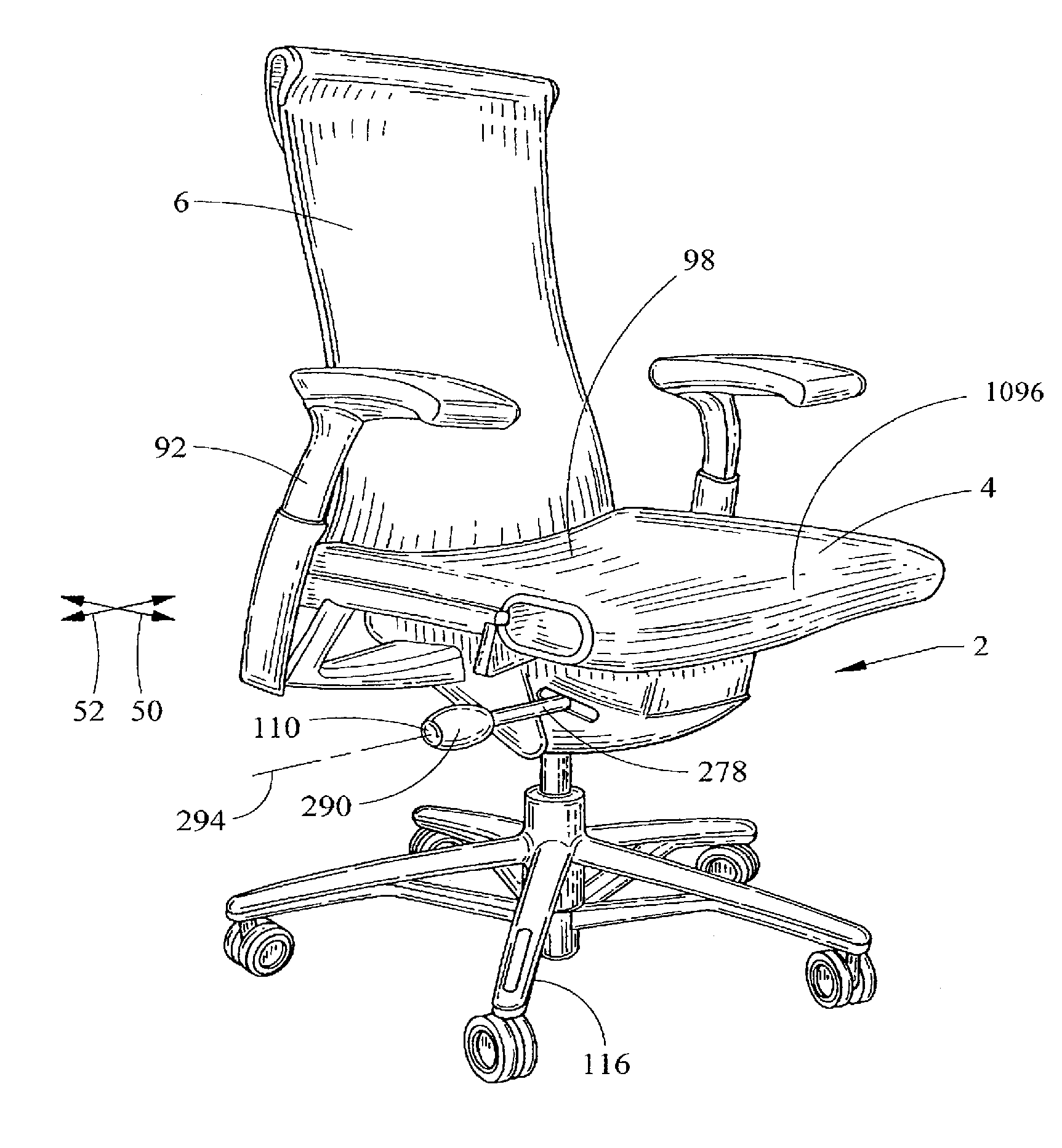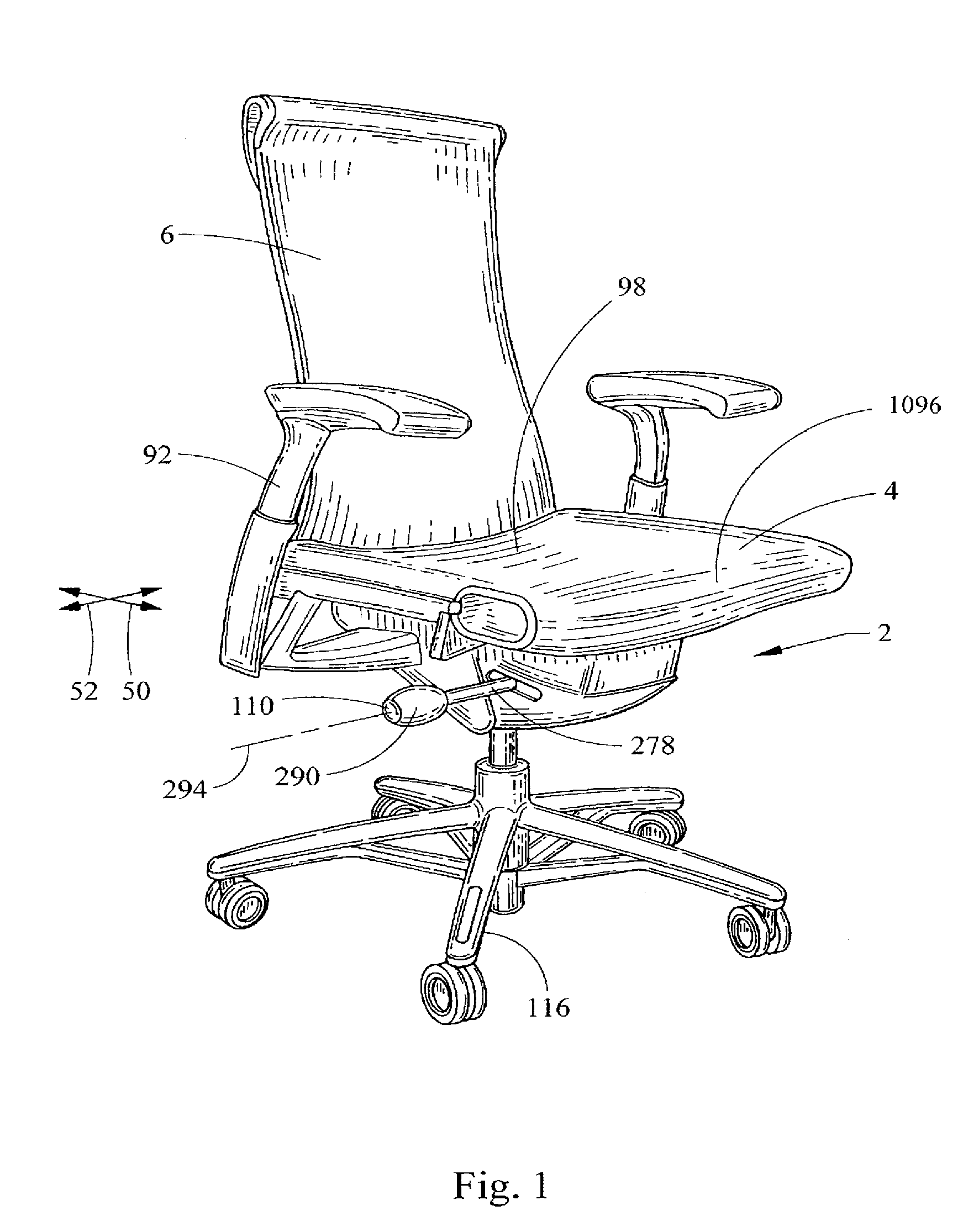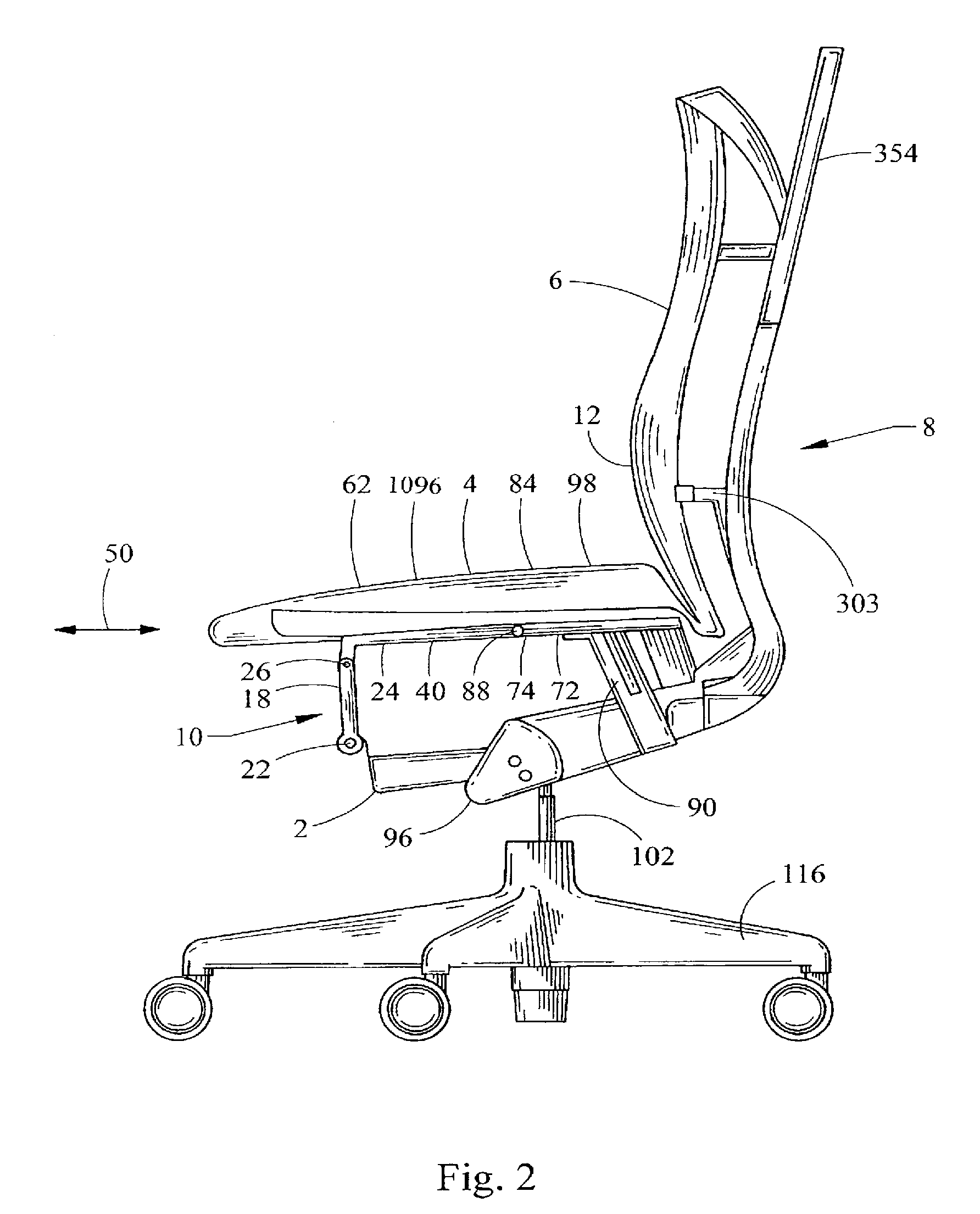Seating structure and methods for the use thereof
a technology of seating structure and seat back, which is applied in the direction of seating, fastening means, stools, etc., can solve the problems of user's tendency to slide forward in the seat, seat and back are not individually adjustable, and are not individually articulated, so as to reduce the amount of hip joint drop during recline, tighten the package space, and reduce the effect of hip drop
- Summary
- Abstract
- Description
- Claims
- Application Information
AI Technical Summary
Benefits of technology
Problems solved by technology
Method used
Image
Examples
Embodiment Construction
General:
[0135]The terms “longitudinal” and “lateral” as used herein are intended to indicate the directions 50, 52 of the chair from front to back and from side to side, respectively. Similarly, the terms “front”, “side”, “back”, “forwardly”, “rearwardly”, “upwardly” and “downwardly” as used herein are intended to indicate the various directions and portions of the chair as normally understood when viewed from the perspective of a user sitting in the chair. It should be understood that the terms “mounted,”“connected”, “coupled,”“supported by,” and variations thereof, refer to two or more members or components that are joined, engaged or abutted, whether directly or indirectly, for example, by way of another component or member, and further that the two or more members, or intervening member(s) can be joined by being integrally formed, or by way of various fastening devices, including for example and without limitation, mechanical fasteners, adhesives, welding, press fit, bent-over t...
PUM
| Property | Measurement | Unit |
|---|---|---|
| angle | aaaaa | aaaaa |
| angle | aaaaa | aaaaa |
| angle | aaaaa | aaaaa |
Abstract
Description
Claims
Application Information
 Login to View More
Login to View More - R&D
- Intellectual Property
- Life Sciences
- Materials
- Tech Scout
- Unparalleled Data Quality
- Higher Quality Content
- 60% Fewer Hallucinations
Browse by: Latest US Patents, China's latest patents, Technical Efficacy Thesaurus, Application Domain, Technology Topic, Popular Technical Reports.
© 2025 PatSnap. All rights reserved.Legal|Privacy policy|Modern Slavery Act Transparency Statement|Sitemap|About US| Contact US: help@patsnap.com



